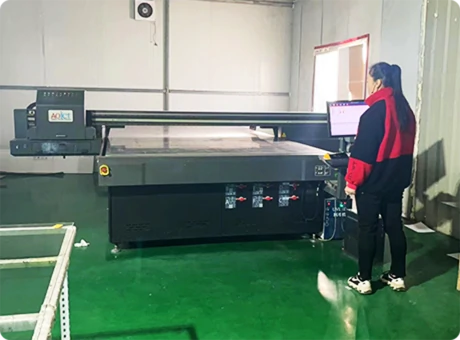Sheet glass manufacturing is a fundamental process in the production of glass used for a variety of applications, including windows, mirrors, and glass doors. This industry is characterized by its sophisticated technology and strict quality control measures to meet the increasing demands of modern architecture and design.
The manufacturing of sheet glass generally involves several key processes melting, forming, annealing, and polishing. The journey begins with raw materials, primarily silica sand, soda ash, and limestone, which are combined in a furnace. This mixture is heated to temperatures exceeding 1,400 degrees Celsius to form molten glass. The high temperature ensures that the raw materials fully melt and fuse together, creating a homogenous liquid glass suitable for further processing.
Once the molten glass is prepared, it is formed into sheets using one of several techniques. The most commonly used method is the float glass process, which involves pouring molten glass onto a bed of molten tin. This creates a smooth, flat surface as the glass spreads out and floats on the tin. The float method not only produces glass with high optical clarity but also allows for uniform thickness, which is crucial for applications like windows.
After the glass is formed, it undergoes a cooling process known as annealing. This step involves gradually lowering the temperature of the glass in a controlled environment, which relieves internal stresses that may have developed during the forming process. This is done in a lehr, a long furnace that maintains a consistent temperature gradient. Proper annealing is essential, as it ensures the durability and strength of the final product.
sheet glass manufacturing
Once cooled, the glass sheets are cut to size and undergo finishing processes, including polishing and surface treatments. Polishing is crucial as it enhances the clarity and smoothness of the glass, making it suitable for high-end applications. Additionally, surface treatments such as coating and laminating can be applied to improve energy efficiency, UV protection, or safety features, such as shatter resistance.
Sustainability has become a critical focus in sheet glass manufacturing. The industry is exploring ways to reduce energy consumption, minimize waste, and utilize recycled materials. For instance, manufacturers can incorporate cullet, or recycled glass, into their production process. This not only reduces the overall carbon footprint but also lowers energy requirements, as cullet melts at a lower temperature than raw materials.
The demand for high-quality sheet glass is continuously on the rise due to trends in architecture and interior design that favor larger glass surfaces and innovative applications. Modern buildings often incorporate extensive glazing for aesthetic reasons and energy efficiency. This has led to advancements in glass technology, including tempered and laminated glass, which offer enhanced strength and safety benefits.
In conclusion, sheet glass manufacturing is a complex process that integrates advanced technology and sustainability practices. From the careful selection of raw materials to the final finishing touches, each step contributes to producing high-quality glass that meets the needs of contemporary society. As the industry continues to evolve, innovations in manufacturing processes and a commitment to environmental responsibility will shape the future of sheet glass production.
 Afrikaans
Afrikaans  Albanian
Albanian  Amharic
Amharic  Arabic
Arabic  Armenian
Armenian  Azerbaijani
Azerbaijani  Basque
Basque  Belarusian
Belarusian  Bengali
Bengali  Bosnian
Bosnian  Bulgarian
Bulgarian  Catalan
Catalan  Cebuano
Cebuano  Corsican
Corsican  Croatian
Croatian  Czech
Czech  Danish
Danish  Dutch
Dutch  English
English  Esperanto
Esperanto  Estonian
Estonian  Finnish
Finnish  French
French  Frisian
Frisian  Galician
Galician  Georgian
Georgian  German
German  Greek
Greek  Gujarati
Gujarati  Haitian Creole
Haitian Creole  hausa
hausa  hawaiian
hawaiian  Hebrew
Hebrew  Hindi
Hindi  Miao
Miao  Hungarian
Hungarian  Icelandic
Icelandic  igbo
igbo  Indonesian
Indonesian  irish
irish  Italian
Italian  Japanese
Japanese  Javanese
Javanese  Kannada
Kannada  kazakh
kazakh  Khmer
Khmer  Rwandese
Rwandese  Korean
Korean  Kurdish
Kurdish  Kyrgyz
Kyrgyz  Lao
Lao  Latin
Latin  Latvian
Latvian  Lithuanian
Lithuanian  Luxembourgish
Luxembourgish  Macedonian
Macedonian  Malgashi
Malgashi  Malay
Malay  Malayalam
Malayalam  Maltese
Maltese  Maori
Maori  Marathi
Marathi  Mongolian
Mongolian  Myanmar
Myanmar  Nepali
Nepali  Norwegian
Norwegian  Norwegian
Norwegian  Occitan
Occitan  Pashto
Pashto  Persian
Persian  Polish
Polish  Portuguese
Portuguese  Punjabi
Punjabi  Romanian
Romanian  Russian
Russian  Samoan
Samoan  Scottish Gaelic
Scottish Gaelic  Serbian
Serbian  Sesotho
Sesotho  Shona
Shona  Sindhi
Sindhi  Sinhala
Sinhala  Slovak
Slovak  Slovenian
Slovenian  Somali
Somali  Spanish
Spanish  Sundanese
Sundanese  Swahili
Swahili  Swedish
Swedish  Tagalog
Tagalog  Tajik
Tajik  Tamil
Tamil  Tatar
Tatar  Telugu
Telugu  Thai
Thai  Turkish
Turkish  Turkmen
Turkmen  Ukrainian
Ukrainian  Urdu
Urdu  Uighur
Uighur  Uzbek
Uzbek  Vietnamese
Vietnamese  Welsh
Welsh  Bantu
Bantu  Yiddish
Yiddish  Yoruba
Yoruba  Zulu
Zulu 

